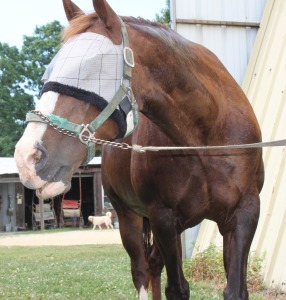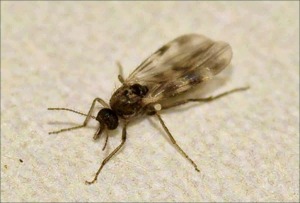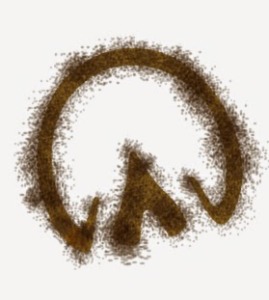
Hay Everyone!
I’ve been walking around my barn with a fly swatter trying to get all these PESKY FLIES!! All day long, it’s Buzz-Buzz-Bite-Buzz-Buzz-Bite! And then I spend the rest of the day scratching. Luckily for me, the staff at Rutgers is putting up some protective measures against flies for my friends and me. You can see Lord Nelson is wearing a fly mask. Here are some tips you can use at your own barn.
Step 1: Hiding
Some flies and insects won’t bother your horse if they are indoors or behind screens. But what fun is that??!! I want to run and play in my sunny pasture!
Step 2: Prevent Production
Another great way to deal with your insect problem is to prevent the production and reproduction of the insect. These tips will help to reduce production:
- Keep feed dry and avoid ground feeding.
- Clean up manure at least two times per week. You need to be actively composting or spreading manure so that flies don’t feed on this.
- Replace stall bedding weekly. Wood shavings and sawdust produce fewer flies than straw.
- Place waterers in well-drained areas and away from places where horses are fed.
Step 3: Repellent
One of the big issues with repellents is that you have to worry about non-targeted effects. This can include the effect that the repellents will have on your horse, pets, family, and yourself. While repellents might work some insects, they won’t work on all. Larvicides will attack the larva, while Adulticides will attack the adults. Fly repellents can provide temporary relief from attacking stable flies.
Step 4: Just Deal With It
One of the things about being outdoors in nature is… you’re outdoors in nature.  Bugs are everywhere and they aren’t always harmful to you. While using strong repellants might get rid of that annoying mosquito, think about what it might do to the local bees that pollinate your flowers. Sometimes the best way to deal with insects is to prevent production and just deal with the ones that you have.
Bugs are everywhere and they aren’t always harmful to you. While using strong repellants might get rid of that annoying mosquito, think about what it might do to the local bees that pollinate your flowers. Sometimes the best way to deal with insects is to prevent production and just deal with the ones that you have.
Now, here are some facts about flies. There are 2 types of flies: Filth Flies and Aquatic Biting Flies. Filth flies are found in…you guessed it, FILTH! Some examples are manure and soiled bedding. Aquatic biting flies travel in…WATER! These flies are nasty and are hard to get rid of, as repellants are ineffective. The best way to decrease their population is removing any standing water. The 3 most common types of aquatic biting flies are black, horse, and deer flies.
The take home message for controlling fly population is CLEANLINESS! Keeping your barn and pastures clean, makes for a very happy horse.
See you soon!

Snowdrift
